How We Choose : Grout for Tile
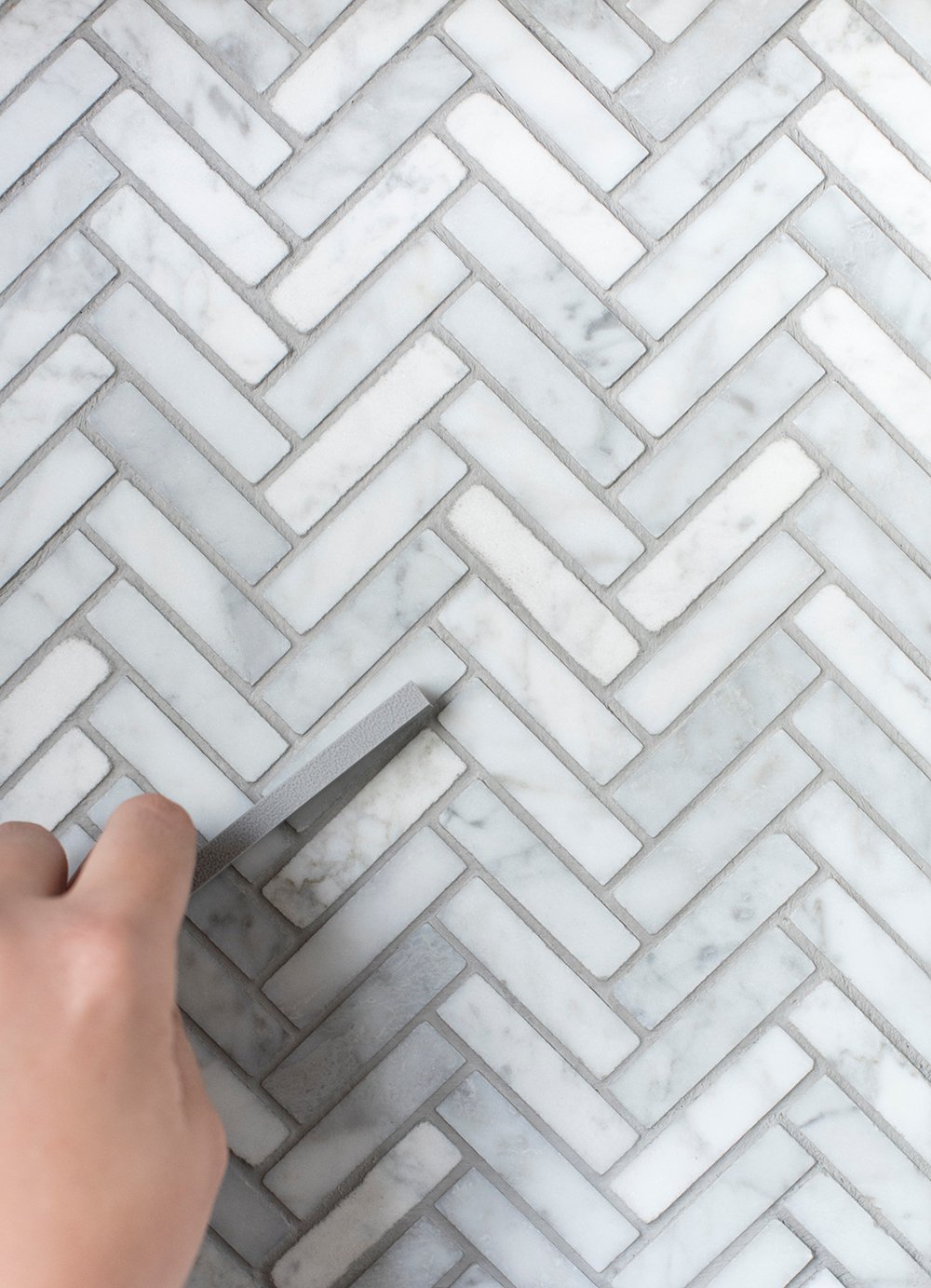 This is something I’ve had to do often so far in 2018… between my own projects (the kitchen & laundry room), as well as client projects, grout selection has been on my mind lately because I’ve been dealing with a ton of tile. I thought a ‘How We Choose‘ post covering the grout selection process might be helpful for you as well. Click through for tips on choosing the appropriate grout for your tile and space!
This is something I’ve had to do often so far in 2018… between my own projects (the kitchen & laundry room), as well as client projects, grout selection has been on my mind lately because I’ve been dealing with a ton of tile. I thought a ‘How We Choose‘ post covering the grout selection process might be helpful for you as well. Click through for tips on choosing the appropriate grout for your tile and space!
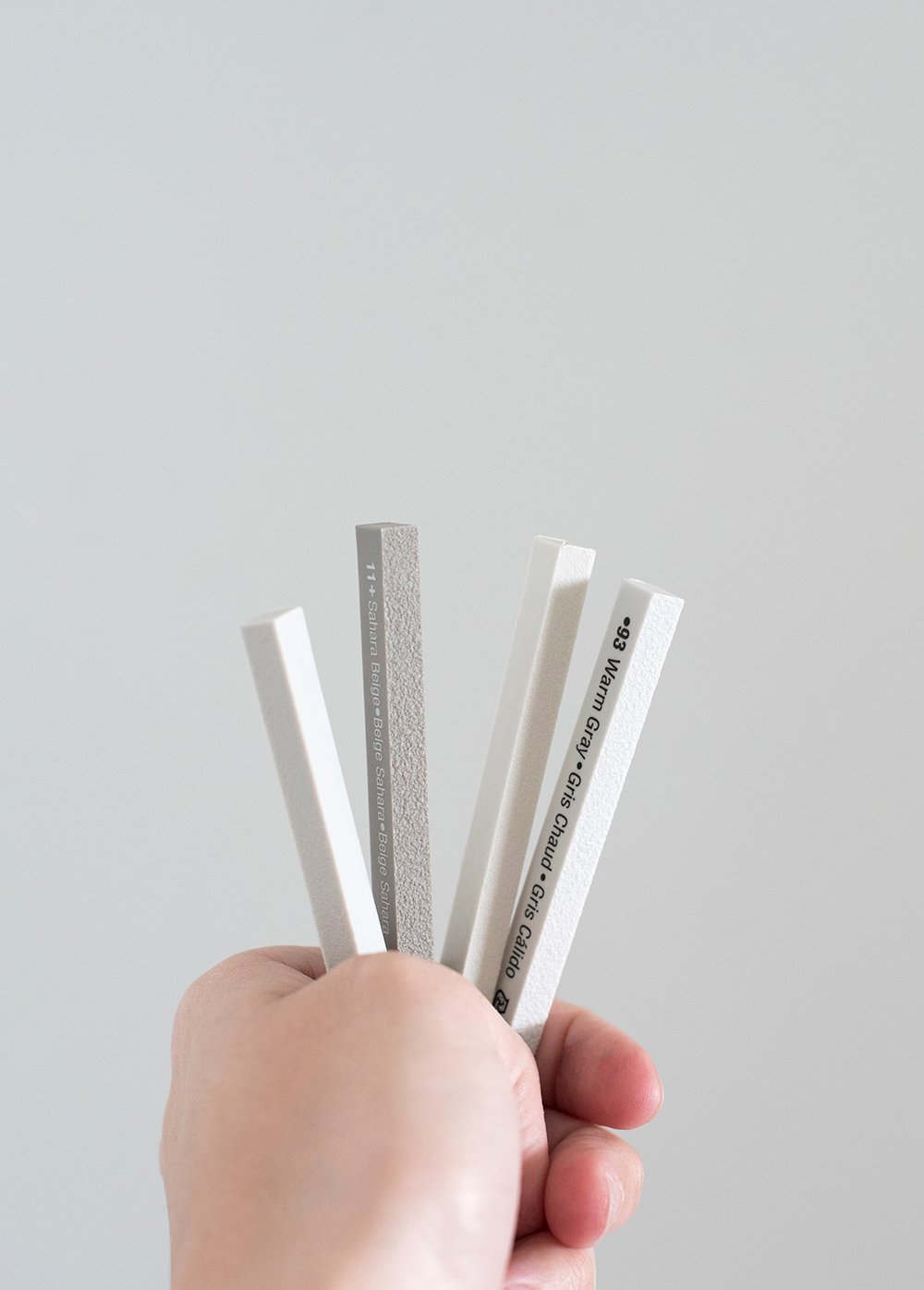 I’ll start by saying, this post is NOT sponsored… I just use Mapei grout because it works well for my tile selection and it’s easy for me to access at our local tile store. Of course every sample has their logo and color name on it, which means it was unavoidable to share my process and the color swatches without getting their logo in the shot. Anyway, I just thought I’d give a disclaimer. This process works for any brand of grout- whatever your preference may be!
I’ll start by saying, this post is NOT sponsored… I just use Mapei grout because it works well for my tile selection and it’s easy for me to access at our local tile store. Of course every sample has their logo and color name on it, which means it was unavoidable to share my process and the color swatches without getting their logo in the shot. Anyway, I just thought I’d give a disclaimer. This process works for any brand of grout- whatever your preference may be!
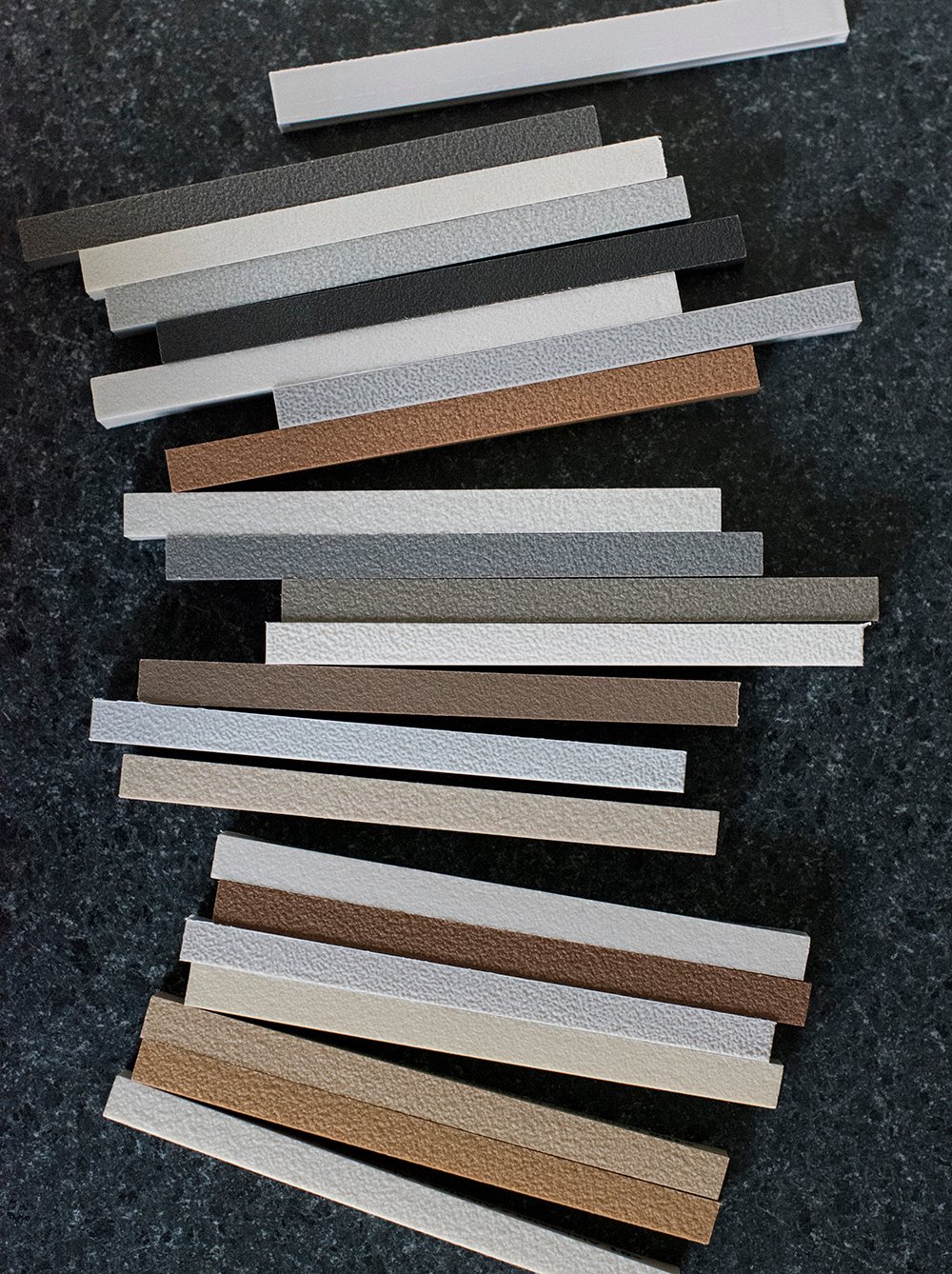
T H I N K A B O U T . . .
Let’s dive right in, shall we? I always kick off these posts with things to consider / questions to ask yourself before you start shopping.
Questions to ask yourself prior to purchasing grout:
- What type of tile do you have?
- What is the aesthetic you’re going for (high contrast / emphasized pattern OR subtle / monochromatic)?
- What is the spacing / distant between each tile (this influences the product you need- sanded or unsanded)?
- Does this grout require sealing?
- What does the application process look like?
- How will the color wear? If it’s a lighter color, think about dirt, staining, etc.
- Where is the grout being installed (wall, floor, backsplash, bathtub surround, etc)?
- What does the cleaning process look like?
- How much will you need?
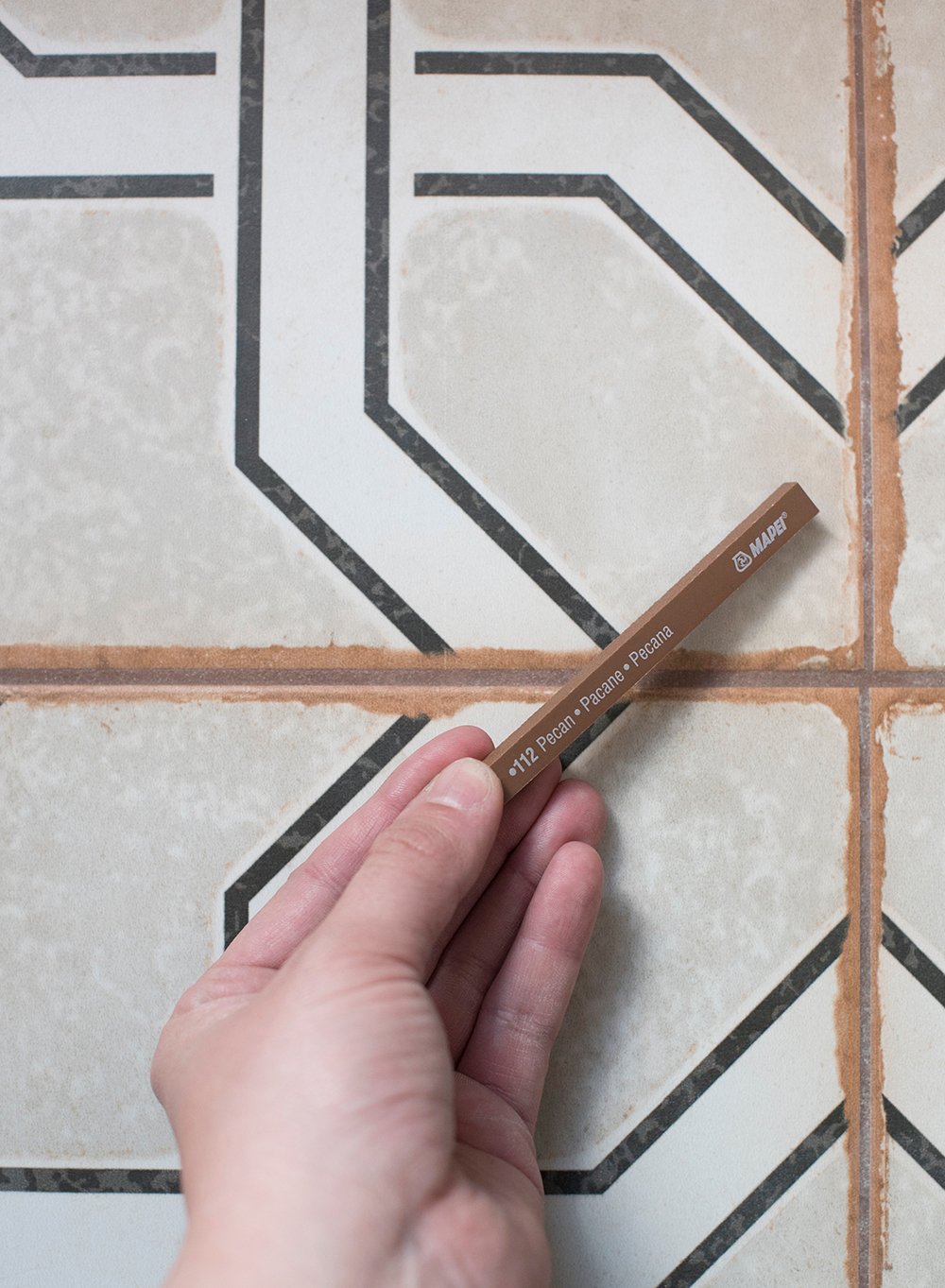
M Y D E S I G N P R O C E S S
My design process is pretty simple. I take the same steps every time I choose grout. I’ll outline it below…
- #1: Determine the Spacing // I always start by determining the spacing I’d like my tiles set at because this influences the quantity I’ll need. Obviously mosaics are set and can’t be changed if they have a mesh backing, but when working with single tile pieces or field tile, the decision is yours!
- #2: Calculate Quantity // I then calculate how much grout I’ll need (there’s a cheat sheet later in the post, pin that!).
- #3: Determine Aesthetic // Next, I determine what aesthetic I’m shooting for. Usually I decide between one of two: graphic OR monochromatic. For graphic, think light tile and dark grout… it really emphasizes the pattern and draws attention to the grout line. For monochromatic, think subtle…. I try to match the grout color pretty close to the tile itself, or something within the same family for a softer look (depicted in the image below).
- #4: Choose a Color // I’ll grab a bunch of samples and begin narrowing down them down. Usually I’ll go from 5 to 2 to 1 (the winner). Always, always, ALWAYS look at the grout in the room alongside the tile when selecting the color. You don’t need to take it outside to check it under “natural” light because it will never leave the space it lives in. I also like to sandwich the grout between a couple tiles (see the image below). I’ll even ruin a mosaic sample by picking it apart to squeeze in the grout swatch because it’s important to see the color in context… sandwiched between the tile.
- #5: Pick the Product // Finding the appropriate product is super important. I then choose between sanded and non-sanded grout, and determine if it needs to be sealed… more on those terms later in the post. If I need any additional items (like sealant), I’ll grab it at the same time as the grout purchase.

S A N D E D v s . U N S A N D E D
Back to the sanded / unsanded discussion… there is a time and place for each, and it is determined by your tile. I’ll list the main differences below:
- Sanded grout is thicker, more textural, and more durable than unsanded grout.
- Sanded grout can sometimes damage smooth tiles, so it should be applied carefully. Since it has sand in the mix, it’s an abrasive product and can micro-scratch smooth or soft tile. It’s just something to be aware of, but usually goes unnoticed if applied properly.
- The main difference is the grout line spacing… sanded grout should NEVER be used for joints smaller than 1/8th of an inch. I prefer smaller grout lines, so most of the grout in my home is non-sanded.
When considering grout lines, keep in mind, the more (or wider) grout lines you have on a floor, the more traction it will provide. The same goes for wall tile grout lines… if you have wide grout lines in your shower, that might mean more cleaning or dirt could show more easily. Think of things like this when making your selection!
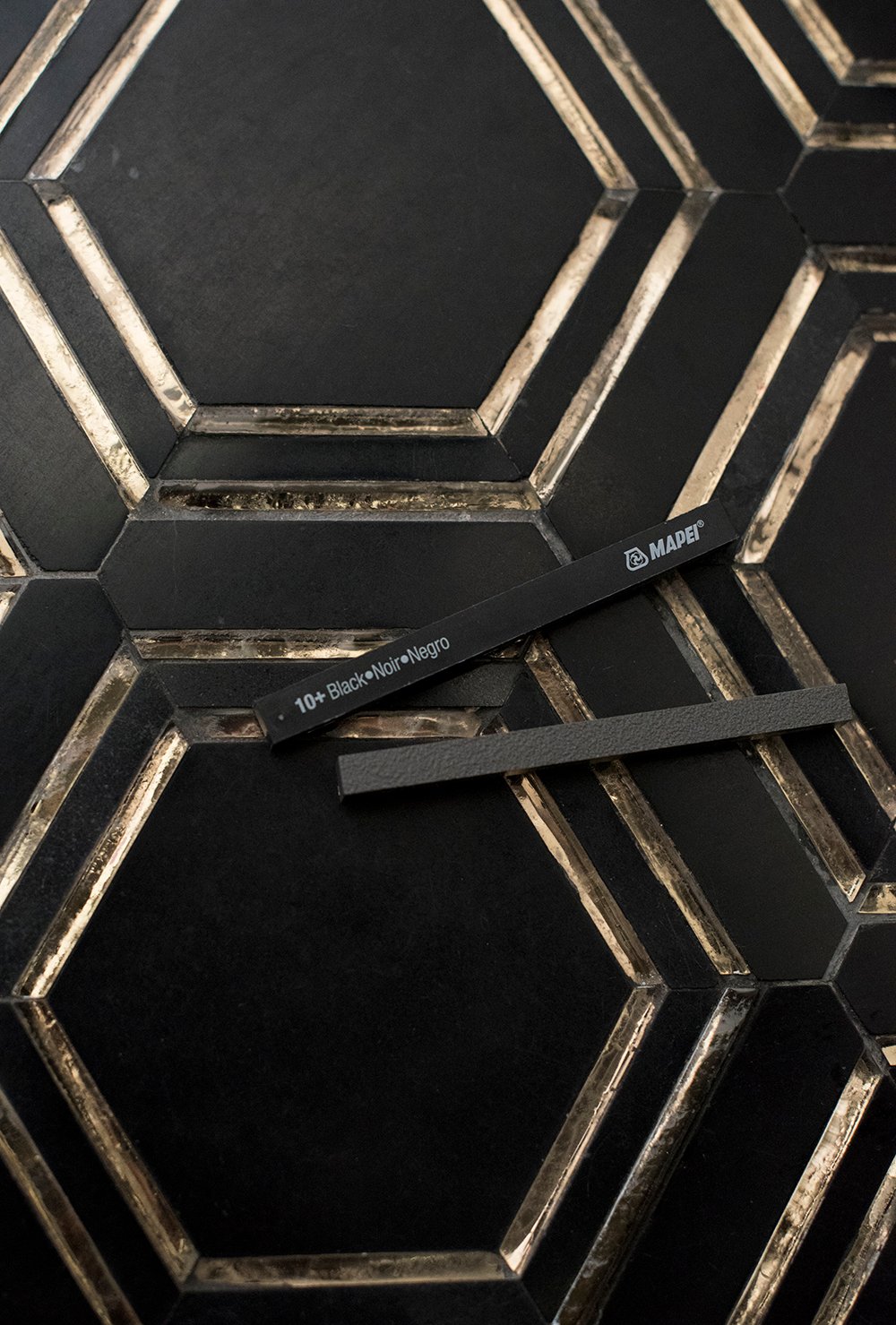
Q U A N T I T Y
Now that you’ve determined your joint spacing, let’s talk about how much you’ll need. I like to use a cheat sheet because I hate math, so I photographed the one I use for you below.
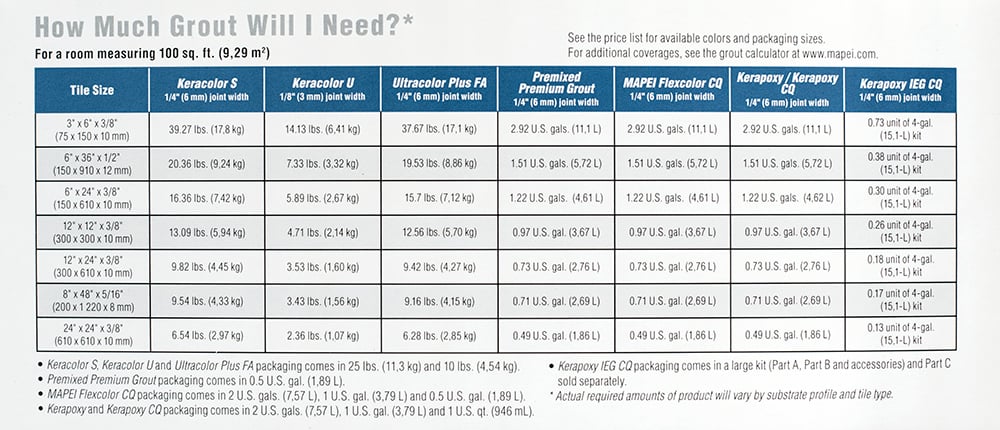 I always order overage, and sometimes even grab an extra bag- because the tile store I shop at allows returns for unused products. It’s definitely saved me a trip in the past.
I always order overage, and sometimes even grab an extra bag- because the tile store I shop at allows returns for unused products. It’s definitely saved me a trip in the past.
F I N I S H I N G S T E P S
Once the tile is grouted, seal it (if needed). Not all grout needs sealed, so check the packaging to see if yours requires it.
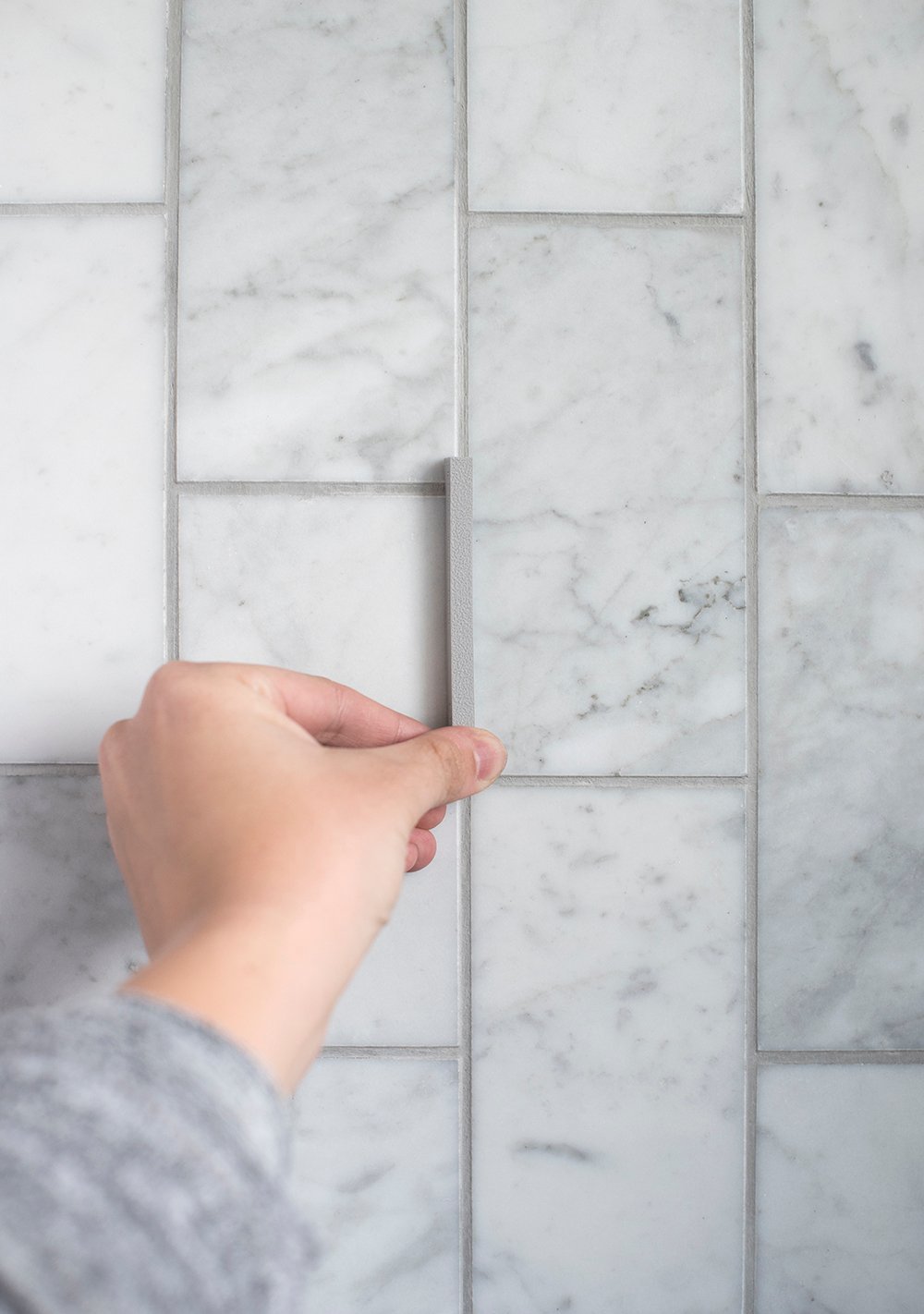 It’s also important to check the specs on the packaging for cleaning and post care. Certain cleaning products can break down grout lines, while others don’t clean very effectively. I usually test a small area in an inconspicuous spot before cleaning the entire thing… just in case.
It’s also important to check the specs on the packaging for cleaning and post care. Certain cleaning products can break down grout lines, while others don’t clean very effectively. I usually test a small area in an inconspicuous spot before cleaning the entire thing… just in case.
M Y G O – T O C O L O R S
This question comes up a lot… is there a “one size fits all” grout color? Unfortunately, no… but I do have favorites that work well with lots of tile. I’ll list my top 10 from the Mapei collection below…
- Timberwolf // 104
- Cobblestone // 103
- Pearl Gray // 19
- Alabaster // 01
- Ivory // 39
- Sahara // 11
- Warm Gray // 93
- Silver // 27
- Gray // 09
- Black // 10
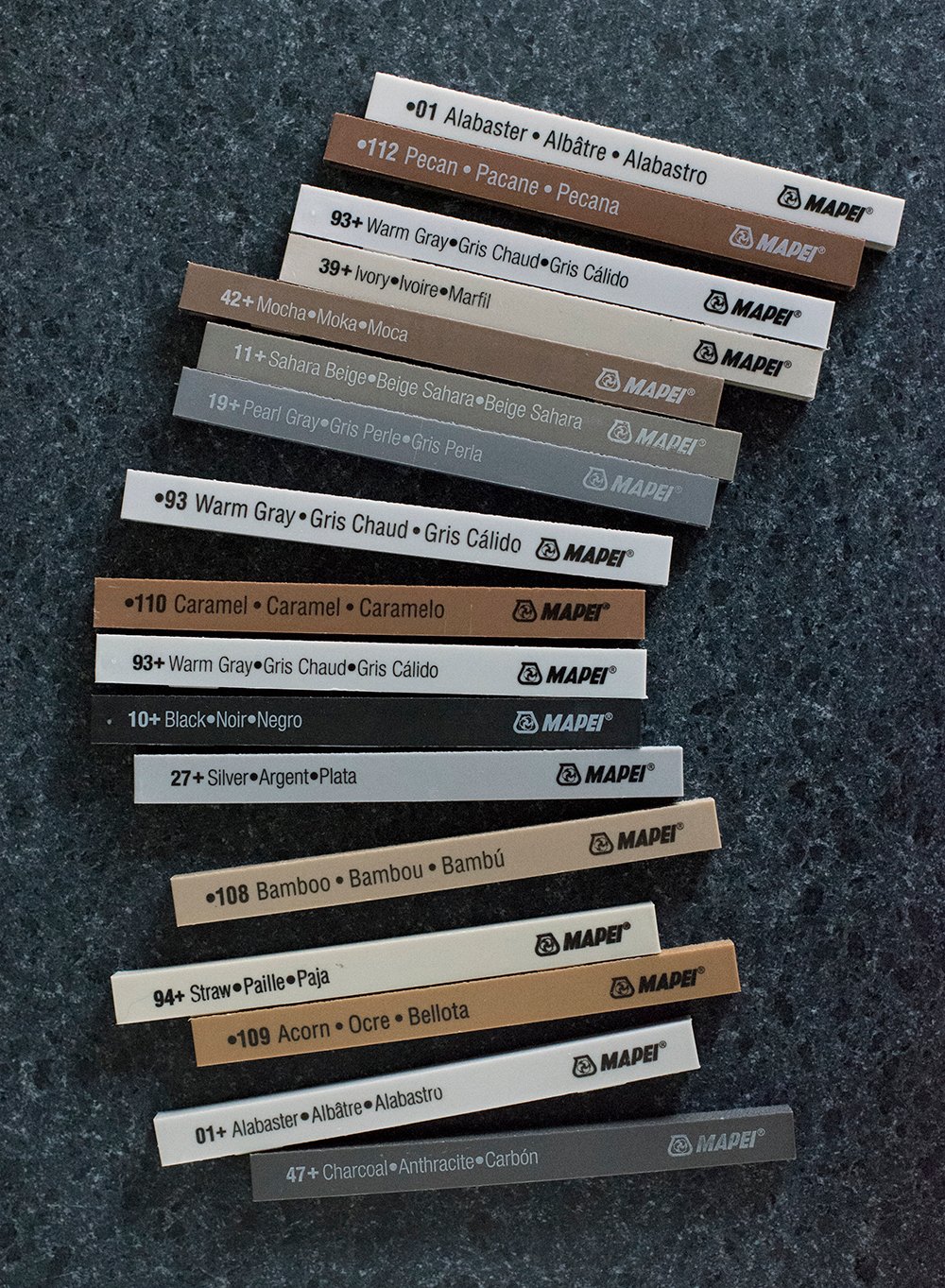 For more posts in the ‘How We Choose’ series, click here. Or you might also want to check out our how-to video on installing floor tile! As always, if you have any questions- leave me a comment below…
For more posts in the ‘How We Choose’ series, click here. Or you might also want to check out our how-to video on installing floor tile! As always, if you have any questions- leave me a comment below…
